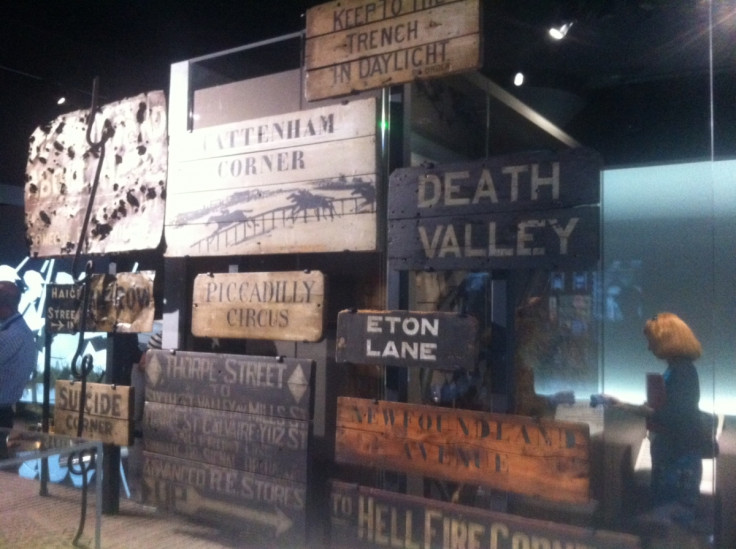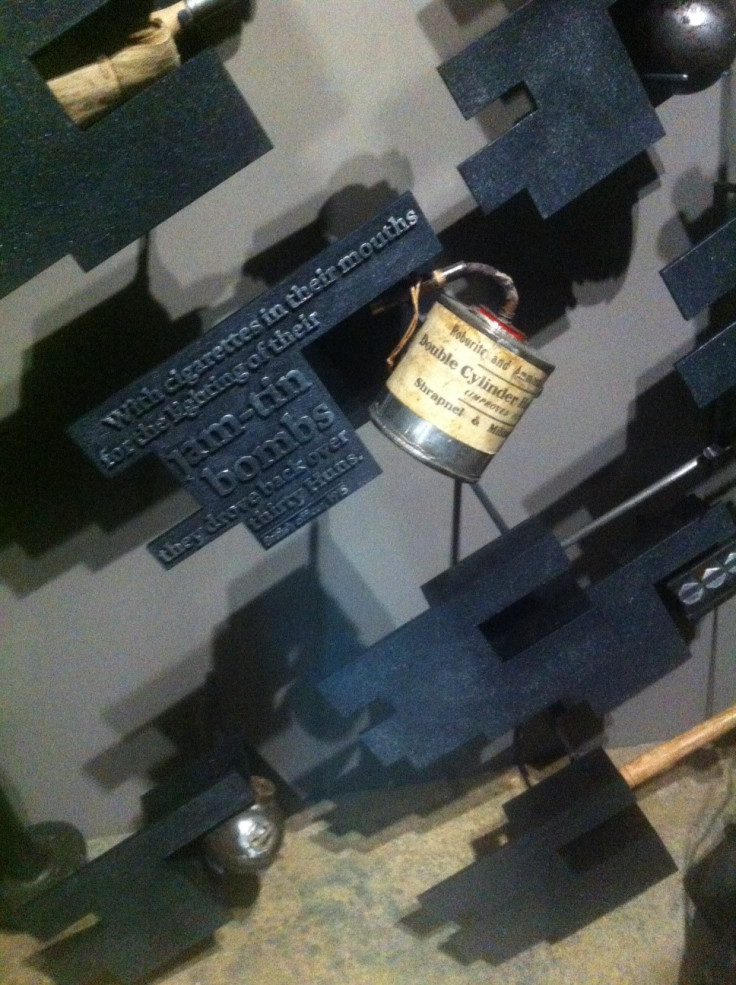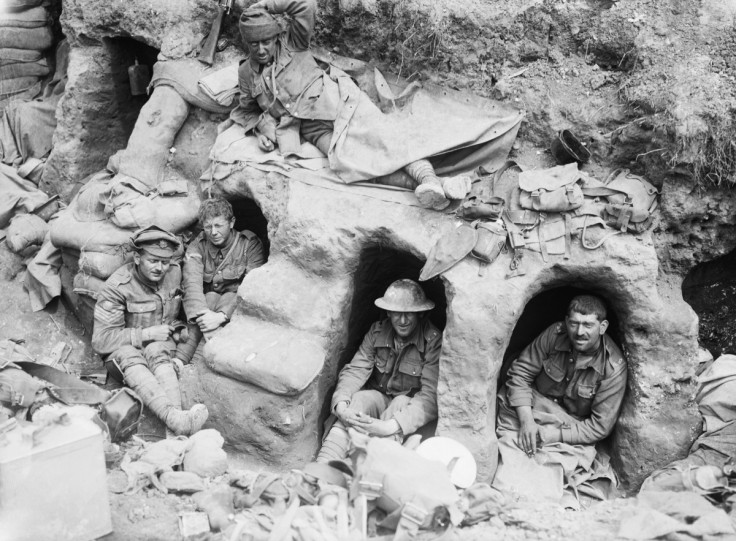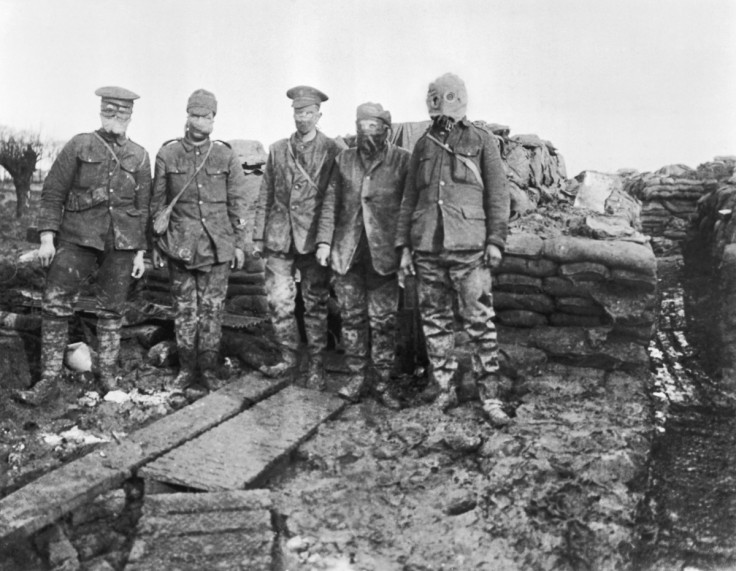First World War Exhibition at IWM London Review: Sights and Sounds of the Trenches

The Imperial War Museum has unveiled one of the most astounding historical exhibitions to mark the centenary of World War I, after meticulously creating a sensory assault to immerse the visitor in one of the most horrifying moments in British memory.
After receiving £40m (€51m, $68m) from a number of funders, sponsors, trusts, foundations and individuals, including a grant of £6.5m from the Heritage Lottery Fund and £5m from the Department of Culture, Media and Sport, IWM London managed to transform the entire building into a hub for experiencing the horrors and bitter sweet camaraderie of the First World War.
From personal letters, to tanks, and shells from Big Bertha, IWM London intended to make the First World War galleries as all-encompassing as possible.
"Each of the objects on display will give a voice to the people who created them, used them or cared for them," said IWM's director general Diane Lees.
"It will also reveal stories not only from their suffering, destruction and loss but also endurance and innovation, duty and devotion, comradeship and love."
The IWM galleries showcase the most comprehensive collection of World War I artefacts from across the globe with 1,300 objects on display - many of which haven't been seen before. It also includes 60 digital displays including interactive and immersive spaces.
The galleries consist of 14 chapters which the Galleries will be made up of are: Hope and Glory, An Inevitable War, Shock, Your Country Needs You, Deadlock, World War, Feeding the Front, Total War - The Somme, At All Costs, Life at the Front, Machines Against Men, Breaking Down, Seizing Victory, War Without End .
Starting off in the newly configured Atrium at IWM London, visitors are dwarfed by iconic large object displays and a number of new exhibitions, public spaces, shops and cafes.
Visitors are taken on a journey from the onset of World War I and what Britain was like when it erupted. From archive footage, to interactive displays, IWM London made sure that every sense was assaulted with the not-too distant memories of the WWI.

At the centre of the galleries, lies the oppressive and towering 9.2 inch howitzer gun 'Mother' on display, Total War will explore the Battle of the Somme, the five month long costly battle that started in July 1916 and marked a pivotal point in the war.
Visitors can also watch the original 1916 documentary film of the battle - in its entirety and for the first time with the original musical accompaniment.
In the section Deadlock trench signs, such as 'Hellfire Corner' and 'Piccadilly Circus' helping soldiers navigate the complex network of trenches, are shown alongside objects telling the stories of innovations in trench warfare, including a jarring array of gas masks and poison gas canisters.
This also includes a hollowed out fake tree which became a camouflaged look out post in no man's land.
"The transformation of the First World War galleries at IWM London is a really important marker for the centenary of the war," said Dr Dan Todman (Queen Mary University of London) and Historical Advisor to IWM.
"These galleries really do represent the cutting edge both in museum design and in historical scholarship. The galleries not only tell the story of the war, they explain how and why things happened, and they show what the war meant to people at the time.
"Visitors are brought face-to-face with objects that make clear both the industrial effort and the human impact of the conflict: they will leave understanding the war, and its significance to the modern world, in a new way."
Meanwhile, in Shock, visitors hear the scream of shrapnel shells they will come face to face with a French 75mm field gun, which contributed to the deaths of a million men in just four months of fighting in 1914.
The exhibition becomes particularly moving when you make your way through Life at the Front.

Visitors are able walk through a 'trench' – one of the highlights of the Galleries – with a Sopwith Camel fighter plane swooping low overhead and a Mark V tank looming above.
As you traverse through the uneven and claustrophobic trench, you are surrounded by projected silhouettes of soldiers and a soundscape will evoke the drudgery, discomfort, danger and comradeship which characterised the experience of a British 'Tommy' on the Western Front, from a sudden thunderstorm to a gas attack.
''IWM London is presenting 1914-18 afresh for a twenty first century audience. These impressive new galleries illuminate the soldiers' experiences but they also get us out of the trenches to understand the lives of women and children on the home front and the larger international story of a British world at war," said Professor David Reynolds (Cambridge University), author of 'The Long Shadow: The Great War and the Twentieth Century' and Historical Advisor to IWM.
"They also offer a chance to ponder the hard questions about why Britain fought and what was gained by all the sacrifices."
Meanwhile, one of the more subtle but moving parts of the galleries included the journey of those fighting in World War I.

Although, seven million men marched off to war in August 1914, one million died by the end of the year, meaning volunteering was no longer an option and conscription came into force soon after.
From the archive photos to IWM's rich poster collection, Your Country Needs You focuses on the campaign to recruitment a 'New Army'.
Visitors will see a doll of Field Marshal Lord Kitchener, figurehead of the recruitment campaign, letters from an adoring fan asking him to marry her, and a letter from nine-year-old Alfie Knight pleading to allow him to enlist as he "can ride jolley [sic] quick on my bicycle and...am a good shot with a revolver."
Meanwhile, At all Costs explores how a total war on the battlefields, meant a total war on the home front as women stepped into roles in factories, hospitals, transport and agriculture and even children helped the war effort.
"The remarkable new 1914-1918 galleries at IWM London will be one of the highlights and most enduring legacies of the First World War centenary," said Professor David Stevenson, (London School of Economics) and Historical Advisor to IWM.
"They integrate text, artefacts, and audio-visual material into a compelling total presentation that – while properly focusing on the experience of Britain and its empire – is global in scope.
"Though taking full account of the latest historical research, they leave it open to the visitor to gather the essential information and to draw their own conclusions about the outbreak, development, and impact of that terrible conflict."
IWM London will re-open to the general public daily on 19 July 2014 from 1000 to 1800 BST.
IBTimesUK will release documentary films about the IWM First World War exhibition on the 3 and 4 August.
© Copyright IBTimes 2025. All rights reserved.






















